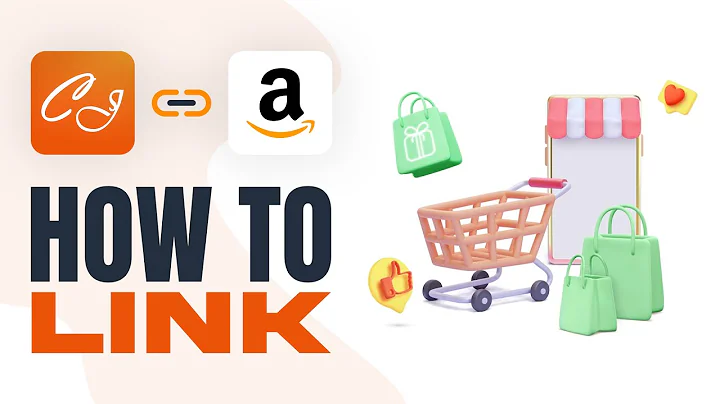Choosing the Best Online Business Model: Dropshipping vs Traditional E-commerce
Table of Contents
- Introduction
- dropshipping: How It Works
- Pros of Dropshipping
- Cons of Dropshipping
- Traditional E-commerce: How It Works
- Pros of Traditional E-commerce
- Cons of Traditional E-commerce
- Making the Decision
- Conclusion
Dropshipping vs. Traditional E-commerce: Understanding the Key Differences
Dropshipping and traditional e-commerce are two popular methods of running an online business. While both have their merits, it's important to understand the differences between the two before deciding which method is best for your online venture. In this article, we'll explore how dropshipping and traditional e-commerce work, the pros and cons of each method, and provide insights to help you make an informed decision.
Dropshipping: How It Works
Dropshipping is a business model where you partner with a supplier to sell their products without holding any inventory. The process begins by finding a reputable dropshipping supplier that offers the products you want to sell. Once you have selected a supplier, you list their inventory on your website and begin marketing the products to potential customers. When a customer places an order on your website, you forward the order to your supplier, who then ships the product directly to the customer. This eliminates the need for you to handle inventory, packaging, and shipping logistics.
Pros of Dropshipping
- Access to a large inventory: With dropshipping, you have access to a wide range of products that you can list on your website and promote to potential customers.
- No need to hold inventory: Since your supplier handles all the inventory, you don't have to worry about storage space or managing stock.
- Automation potential: Depending on your setup, you can automate various parts of the dropshipping process, from importing products to fulfilling customer orders.
- Location independence: Dropshipping allows you to run your business from anywhere in the world, as long as you have an internet connection. This flexibility is appealing to many entrepreneurs.
- Lower startup costs: Since you don't need to buy and hold inventory, your startup costs are significantly lower compared to traditional e-commerce businesses.
Cons of Dropshipping
- Narrow profit margins: While there are products with good profit margins in dropshipping, many products have tight profit margins due to higher costs and intense competition.
- Intense competition: Dropshipping has a low barrier to entry, leading to a saturated market with numerous competitors. It can be challenging to stand out and attract customers.
- Shipping times: Dropshipping products often come from overseas suppliers, resulting in long shipping times that can be a disadvantage when customers expect fast delivery.
- Supply chain issues: Since you rely on your supplier for inventory, there is a risk of stock shortages, cancellations, or changes in product availability, which can harm your business.
- Dealing with returns: Dropshipping often involves no return policies from suppliers, leaving you responsible for handling returns effectively, which can be costly and time-consuming.
Traditional E-commerce: How It Works
Traditional e-commerce involves purchasing products in bulk from suppliers or manufacturers, storing the inventory, and shipping orders to customers. To start a traditional e-commerce business, you need to find reliable suppliers, negotiate pricing and terms, purchase inventory, set up your website, and handle all aspects of product fulfillment.
Pros of Traditional E-commerce
- Better profit margins: Buying in bulk allows you to negotiate better prices, resulting in higher profit margins compared to dropshipping.
- Shipping control: With traditional e-commerce, you have more control over shipping times, enabling you to offer faster delivery to customers.
- Quality control: Directly holding inventory allows you to assess and maintain product quality, ensuring a positive customer experience.
- More control and flexibility: Traditional e-commerce gives you greater control over your business's direction, pricing, branding, and customer experience.
Cons of Traditional E-commerce
- Higher startup costs: Traditional e-commerce requires significant capital to purchase inventory and set up warehousing and storage facilities.
- Holding stock risk: Buying and storing inventory comes with the risk of slow-moving or unsold products, which can tie up capital and affect cash flow.
- Time and involvement: Running a traditional e-commerce business involves more hands-on management, including inventory management, packaging, and shipping operations.
Making the Decision
Deciding between dropshipping and traditional e-commerce depends on your preferences, resources, and business goals. Dropshipping offers low startup costs, location independence, and potential automation. However, it comes with narrow profit margins, intense competition, shipping time issues, supply chain risks, and return management challenges.
On the other hand, traditional e-commerce provides better profit margins, shipping control, product quality assurance, and more overall business control. However, it requires higher startup costs, inventory management, and a time-consuming, hands-on approach.
Consider your desired level of involvement, financial resources, product niche, and long-term goals when choosing between the two methods. Research your target market, competitors, and industry trends to make an informed decision that aligns with your business vision.
Conclusion
Both dropshipping and traditional e-commerce have their advantages and disadvantages. Ultimately, the choice between the two methods depends on your individual circumstances and goals. Consider the pros and cons of each approach, evaluate your resources and preferences, and make a decision that best suits your business aspirations. Remember, thorough research and planning are crucial for success in the online business world.
Highlights
- Dropshipping offers access to a large inventory, requires no inventory holding, allows automation, and has lower startup costs.
- Traditional e-commerce provides better profit margins, shipping control, quality assurance, and overall business control.
- Dropshipping has narrow profit margins, intense competition, shipping time issues, supply chain risks, and return management challenges.
- Traditional e-commerce requires higher startup costs, inventory management, and more hands-on involvement.
- The choice between dropshipping and traditional e-commerce depends on personal preferences, financial resources, and business objectives.
Frequently Asked Questions (FAQ)
Q: Which method is better for a beginner entrepreneur?
A: Both dropshipping and traditional e-commerce can be suitable options for beginners. It ultimately depends on the individual's resources, preferences, and goals. Dropshipping may be more appealing for those with limited capital and time flexibility, while traditional e-commerce offers more control and potential for higher profits.
Q: How long does it take to set up a dropshipping or traditional e-commerce business?
A: The time required to set up a business varies depending on factors such as market research, supplier selection, website development, and marketing strategies. Dropshipping businesses can typically be set up more quickly due to lower startup costs and minimal inventory management. Traditional e-commerce businesses may take longer to establish due to sourcing inventory and setting up warehousing and shipping infrastructure.
Q: Can I switch from dropshipping to traditional e-commerce or vice versa?
A: Yes, it is possible to switch between dropshipping and traditional e-commerce methods. If you are currently dropshipping and wish to transition to traditional e-commerce, you will need to source and purchase inventory, arrange warehousing and shipping, and adjust your business operations accordingly. Similarly, transitioning from traditional e-commerce to dropshipping involves finding suitable dropshipping suppliers and adjusting your fulfillment processes.
Q: Which method offers better profit margins?
A: Traditional e-commerce generally offers better profit margins compared to dropshipping. By buying products in bulk, you can negotiate better prices, reducing costs and increasing profit margins. In dropshipping, tight profit margins can be a challenge due to higher product costs and intense competition, which often results in price reductions to attract customers.
Q: Is it possible to combine dropshipping with traditional e-commerce?
A: Yes, it is possible to combine dropshipping with traditional e-commerce. Some businesses use a hybrid model where they stock their best-selling products and dropship less popular items. This allows for greater control over inventory, higher profit margins on stocked items, and the flexibility to offer a broader range of products through dropshipping.



















